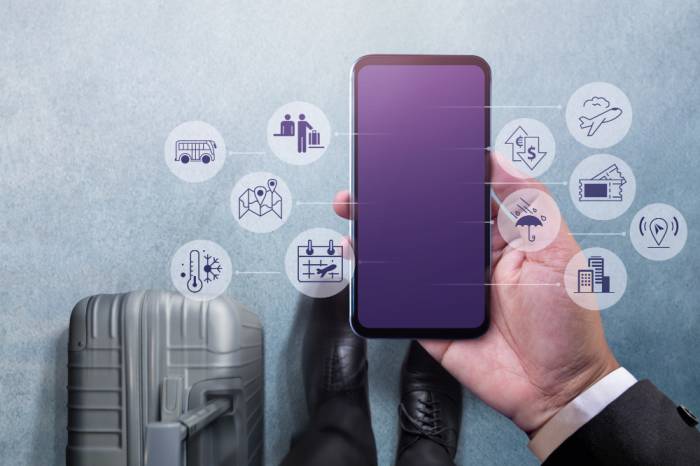Enterprise mobility solutions can be integrated into any business as a strategic step to enhance operational efficiency, increase employee productivity, and ensure tight security across mobile devices and applications. A comprehensive mobility strategy is essential as organizations quickly use mobile technology to support a dynamic and flexible workforce.
Enterprise mobility solutions offer tools and frameworks for properly and securely managing all mobile resources, from smartphones and tablets to applications and content. Such solutions can be integrated into a business to bring about various benefits, including smoother operations, better communication, and data security while satisfying the huge demand for mobility and flexibility.
A report has estimated that the enterprise mobility management market will rise from USD 16.6 billion in 2020 to USD 63.6 billion by 2026, at an average annual growth rate of 10.3%. This rapid growth emphasizes the importance of enterprise mobility solutions in today’s digital era.
Enterprise mobility solutions provide the means for a more agile work environment and follow contemporary business practices, which will position your organization for sustained growth and competitive advantage.
What is enterprise mobility?
Enterprise mobility is a work style where employees are able to work anywhere in the world through various devices and enterprise applications.
The term generically refers to using mobile devices for business purposes. However, it also covers the mobility of corporate data and workers themselves. For instance, take an employee who uploads a presentation from his desktop PC to a cloud storage service, then goes to a client site and accesses the presentation from a personal Apple iPad to show it.
What is enterprise mobile management (EMM)?
Enterprise mobility management (EMM) refers to strategies, tools, and policies enacted within a corporation to manage and secure employee-owned and company-owned mobile devices. EMM has continued to change in various device platforms and workplace mobility trends.
Types of Enterprise Mobility Management Solutions :
The different types of EMM solutions include:
1. Mobile Device Management (MDM):
MDM solutions protect and manage portable electronics, including smartphones and tablets. They empower IT managers to change device settings remotely, enforce security policies, track updates, and pinpoint a device’s location.
2. Mobile Application Management (MAM):
Mobile application management (MAM) solutions primarily manage and safeguard mobile applications. These solutions help businesses install, update, and maintain apps while ensuring staff members follow company security guidelines and utilize them appropriately.
3. Mobile Content Management (MCM):
MCM solutions control and safeguard mobile device access to company documents and material. They guarantee that workers comply with security and data protection regulations while safely accessing, exchanging, and working together on documents.
4. Unified Endpoint Management (UEM):
UEM solutions provide a single way to control several endpoints, such as mobile phones, desktops, laptops, and the Internet of other devices. By integrating MDM, MAM, and other management features, UEM provides a comprehensive view and control over all endpoints inside the business.
Steps to Implement Enterprise Mobility Solutions into Your Business
Here are some steps for implementing enterprise solutions.
Assess Business Needs:
Assess your company’s unique needs and goals for mobile technology. Determine the objectives you want to achieve, such as raising worker productivity, strengthening security, or permitting remote work.
Define Scope and Strategy:
Create a comprehensive mobility plan that describes the implementation requirements. This involves choosing the categories of mobile devices, apps, and materials to be managed and establishing specific goals and performance indicators.
Select the Right Solutions:
Find and select the enterprise mobility solutions that fulfill your company’s requirements. Consider options such as Unified Endpoint Management (UEM), Mobile Device Management (MDM), Mobile Application Management (MAM), and Mobile Content Management (MCM).
Plan and Design:
Develop an extensive implementation strategy, including schedules, resource allocation, and a systematic approach. Ensure the mobility solution’s structure easily interfaces with your IT infrastructure.
Pilot Testing:
Conduct an experiment involving a limited number of users to assess the efficiency of the selected solutions. It allows you to identify problems, get input, and make the required changes before a large-scale deployment.
Deployment:
Roll out the enterprise’s mobility solutions according to the deployment plan and ensure all content, apps, and devices are set up and maintained according to established policies and procedures.
Training and Support:
Employees should receive training to utilize the new mobile tools and follow security guidelines. Employees can assist with any questions or issues before and after the setup.
Monitor and Evaluate:
Monitor usage and performance closely to ensure the mobility solutions meet the goals. Use performance metrics and feedback to assess efficiency and make necessary changes.
Maintain and Update:
Regularly update mobility solutions to fix security flaws, add new functionality, and accommodate evolving business requirements. Ensure every program and gadget is updated and complies with company regulations.
Benefits of Enterprise Mobility:
- Improved Communication: Enterprise mobility enhances the communication of deskless employees with their coworkers, clients, and partners. Enterprise-grade equipment ensures reliable, clear connections within the company’s premises. UC provides the company’s employees with the same resources as their desk-based counterparts, enabling real-time information sharing and enhanced communication, resulting in improved decision-making.
- Increased Safety: Enterprise mobility can enhance the safety of diskless employees by providing access to a panic or emergency call button. This feature offers peace of mind during work and enables mobile workers to request immediate support.
- Increased Customer Satisfaction: Due to enterprise mobility, employees who don’t work at desks can now meet customer needs more efficiently and promptly. Using mobile devices and applications, employees can quickly react to client requests, complaints, and inquiries with real-time customer and product information access. As a result, customer relationships are strengthened, and customer satisfaction increases.
- Improved Quality of Care: Enterprise mobility can help by offering healthcare providers immediate access to essential data and patient care quality.
- Network Security: Enterprise mobility needs network security because it protects sensitive business data from online attacks.
- User Experience: The effectiveness of workplace mobility depends on providing an excellent user experience because users will only accept mobile-friendly solutions.
Challenges of Enterprise Mobility:
Adaptability:
Every team wants to modify settings, but implementing separate setups for each user would be too expensive and time-consuming.
User experience:
One organization faces significant skill shortages, especially with temporary staff. It’s not cost-effective to spend time training every temporary worker.
Data security:
It is crucial to make sure that the most recent security patches are installed on all devices.
Deployment:
The process of approving and deploying devices becomes too time-consuming and costly.
Operating system migration:
Switching towards iOS on all devices immediately would be relatively expensive. Companies believe the transition can be made gradually.
Conclusion
Enterprise mobility is essential for any business organization today, as it creates opportunities that improve productivity, enhance customer satisfaction, and smoothen business operations.
While implementing enterprise mobility solutions, enterprises must consider device management, mobile application management, network security, and data management alongside the end-user experience. This comprehensive approach will help ensure the success of enterprise mobility projects.
VisionX offers various enterprise software development services to enhance business operations through mobile technology. These services improve mobility solutions by delivering customized applications that address organizations’ needs.





